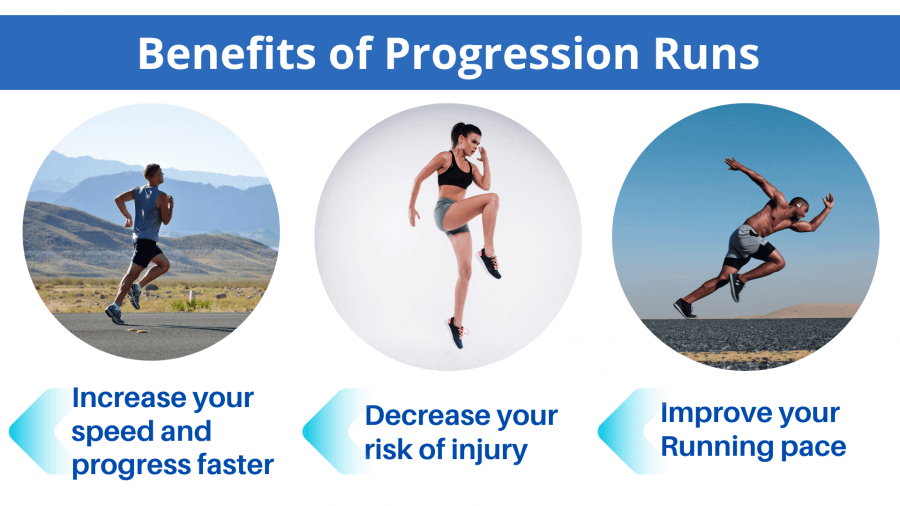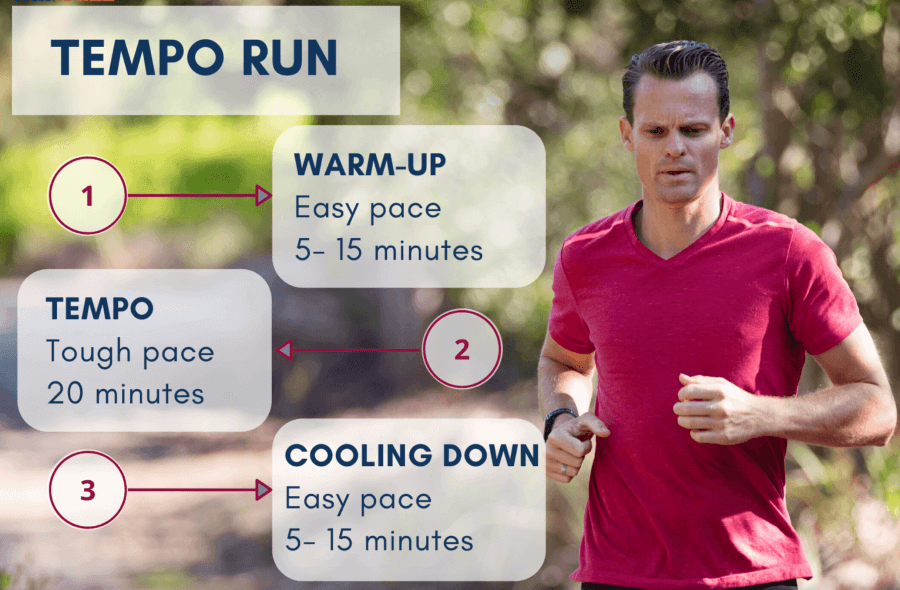Progression Runs Instead Of Tempo Runs

As we continue the conversation about how to grow ourselves into stronger runners, many things can be taken into consideration. A progression run is very easy to explain. You start slow and end fast! While there are many ways to pace yourself through a progression run, the end game is the same. You are working to help yourself get faster!
Are Progression Runs Good?
Of course progression runs are good for your running! Although it may seem tempting to run at a steady pace, and sometimes it is okay to do that, you need to challenge yourself differently in some runs. Causing less stress on your body than a tempo run, a progression run helps you get the wheels moving without you having to hold that same sustained pace for a long time.
A progression run can also help you to achieve mental patience as a runner. Let me explain. You can be tempted to go out too quickly in a race atmosphere. That happens to the best of us. In a progression run where you are setting out to run a particular pace for each portion of the run, you have to temper yourself back for the first part of the run.
In racing, you may find someone next to you surging. Here is where that mental patience comes in. Sure, in a 5K you may benefit from running next to another person who is challenging you to push harder for a faster time. However, in a longer race, like a marathon, going out too fast, too early can have devastating consequences.

Another benefit is the opportunity to build stamina. Often, a runner can run further in a progression run than they would be able to in a tempo run. You can hold that easier effort for a longer distance over a greater period of time.
Progression runs require less recovery time than some other efforts. For example, track work can be very hard on an athlete’s body and would require a recovery run the day after. A progression run is not as taxing.
Using a progression run over a longer distance (or amount of time) has two very specific benefits. First, your body gets even longer to warm up. This is helpful toward injury prevention. The longer warm-up may mean that, over the course of the run, you are running on tired legs. I’m not talking “super tired,” but any time on feet (TOF) helps you to grow as a stronger runner. This means that speeding up, even gradually over time, will show growth.
Types Of Progression Runs
A popular type of progression run is called thirds. In this type of progression run, you simply divide the run into three pieces. The goal is to get progressively faster each third of the run. According to McMillian Running, it should be divided into equal thirds.
If you have never done a progression run before, focus on something that won’t seem too challenging for a first-time effort. If you are regularly running 60 minutes or more, that might be a good place to start.

Your first 20 minutes should be at a very easy pace for you. Then, for the second 20 minutes, hit the speed button just enough to pick up the pace a little. This should not be fast by any means, but you are starting to flirt with feeling the effort. Finally, for the last 20 minutes, get into a solid pace for you.
Please notice that you are not trying to run the final 20 minutes at a super-fast pace. This is just a solid effort where you can only talk in fragments.
Another great way to try out the progression run is during an easy effort day. If you plan to run for 40 minutes, just run the first half super easy and pick up the pace just a bit for the second half. By “just a bit” we mean exactly that. When you are doing this type of progression run, you are really working on keeping your effort steady for a certain duration. This easy effort progression run helps you learn about pacing at different speeds.
The start easy finish hard distance progression run is perfect if you are marathon training. This type of run can be very challenging. You might have a 10 mile run on tap and do the first 8.5 miles at half marathon pace. That final 1.5? You are pushing it to a 10K pace.
This teaches you to run hard on tired legs and will really challenge you!
What Is A Tempo Run?
Runners use tempo runs so they learn to maintain a challenging pace in “practice.” In a tempo, you will typically surround the “meat” of the run, the challenging effort, with an easy warm-up and cool down. A 5-mile tempo run might be 1-mile warm-up, 3 miles at 10K pace, and a 1 mile cool down.
Another type of tempo run would be to divide an amount of time and look at it that way. A 30-minute effort might have 10 minutes of warm-up, 10 minutes of 5K effort, and 10 minutes of cool down.

The thing about a tempo run is you can work on whatever pace you are trying to hone in on. If you are training for a fast half marathon, your tempo miles are at that pace.
Benefits of tempo runs include improving either your speed, distance or both. You learn control as you find that pace then dial on and hold it. You also will have to find your mental toughness if you are staying at a pace that is challenging you.
How Do You Progressively Run Further?
Figuring out how to progressively run further is actually pretty easy. You just add some mileage each week to your longest run! Depending on your general level of fitness, most training plans recommend adding anywhere from one-half mile to two miles to your longest run of the week.
If you are training for your first 5K, you may only add a half-mile to your longest run each week. When half marathon training, your long run usually increases by a full mile. During marathon training, you might add 2 miles to a long run.
In addition to working on increasing the weekly long run, you should watch your overall weekly mileage. Most coaches recommend you only increase your weekly mileage by about 10% each week.
Taking the slow and easy approach to increasing mileage keeps you running healthy and happy! And isn’t that what it is all about?
Sources
- , Start Slow Finish Fast, Running Blog
Latest Articles
 Is Running on a Treadmill Easier Than Running Outside?Runners have their own preferences, whether it is treadmill running, running outside on the road, or exploring trails. So...
Is Running on a Treadmill Easier Than Running Outside?Runners have their own preferences, whether it is treadmill running, running outside on the road, or exploring trails. So... Is It OK to Use Trail Running Shoes on the Road?While trail running shoes can be used on roads, especially in situations where a runner encounters mixed terrains or pref...
Is It OK to Use Trail Running Shoes on the Road?While trail running shoes can be used on roads, especially in situations where a runner encounters mixed terrains or pref... How to Fix Sore Quads After Running?Rest, ice, gentle stretching, and over-the-counter pain relievers can help soothe sore quads after running. Also, ensure ...
How to Fix Sore Quads After Running?Rest, ice, gentle stretching, and over-the-counter pain relievers can help soothe sore quads after running. Also, ensure ... 10 Fruits With The Most Electrolytes to Replace Sports DrinksThese fruits are high in electrolytes such as potassium, magnesium, and calcium, essential for hydration, muscle function...
10 Fruits With The Most Electrolytes to Replace Sports DrinksThese fruits are high in electrolytes such as potassium, magnesium, and calcium, essential for hydration, muscle function...

